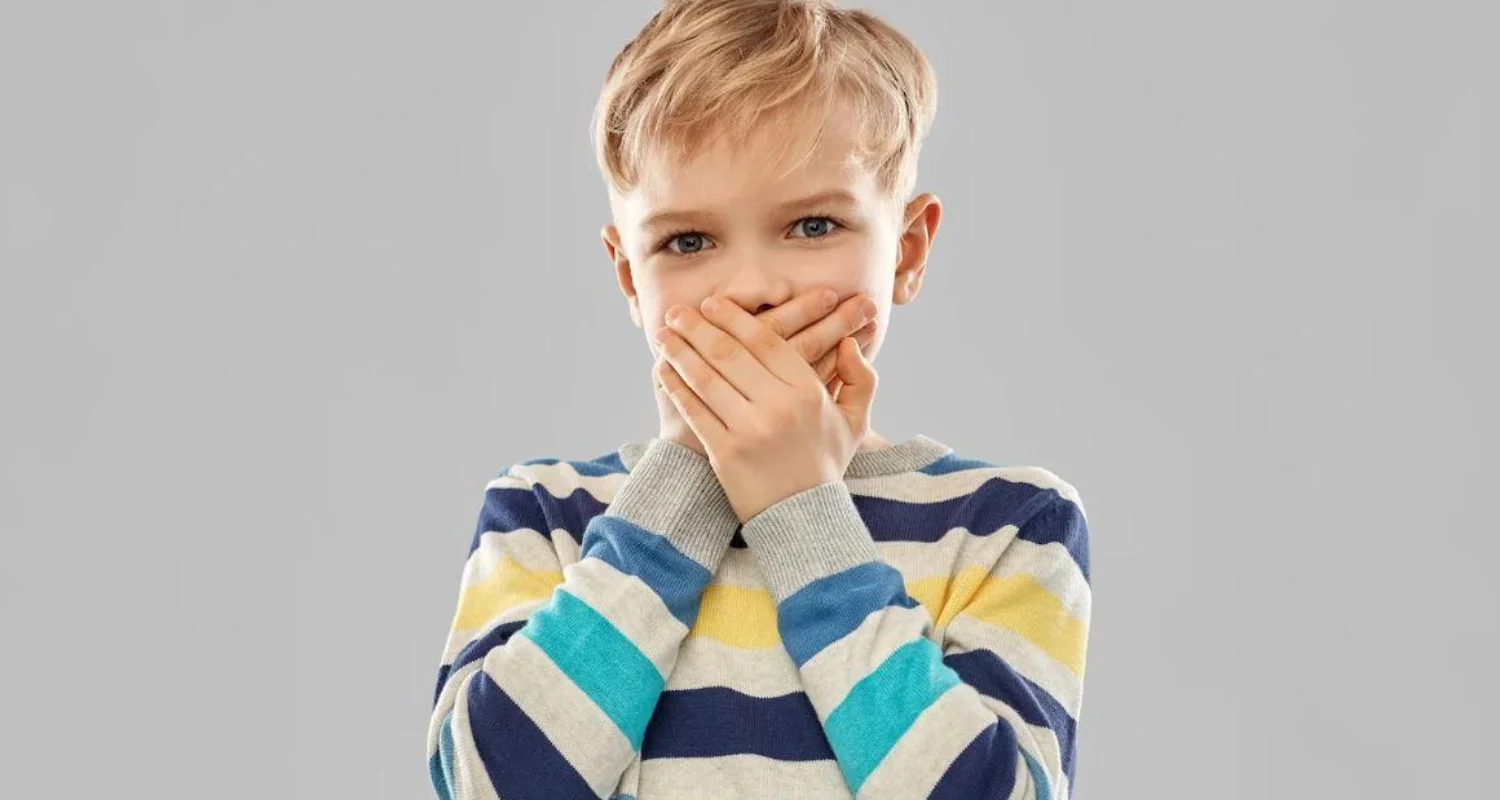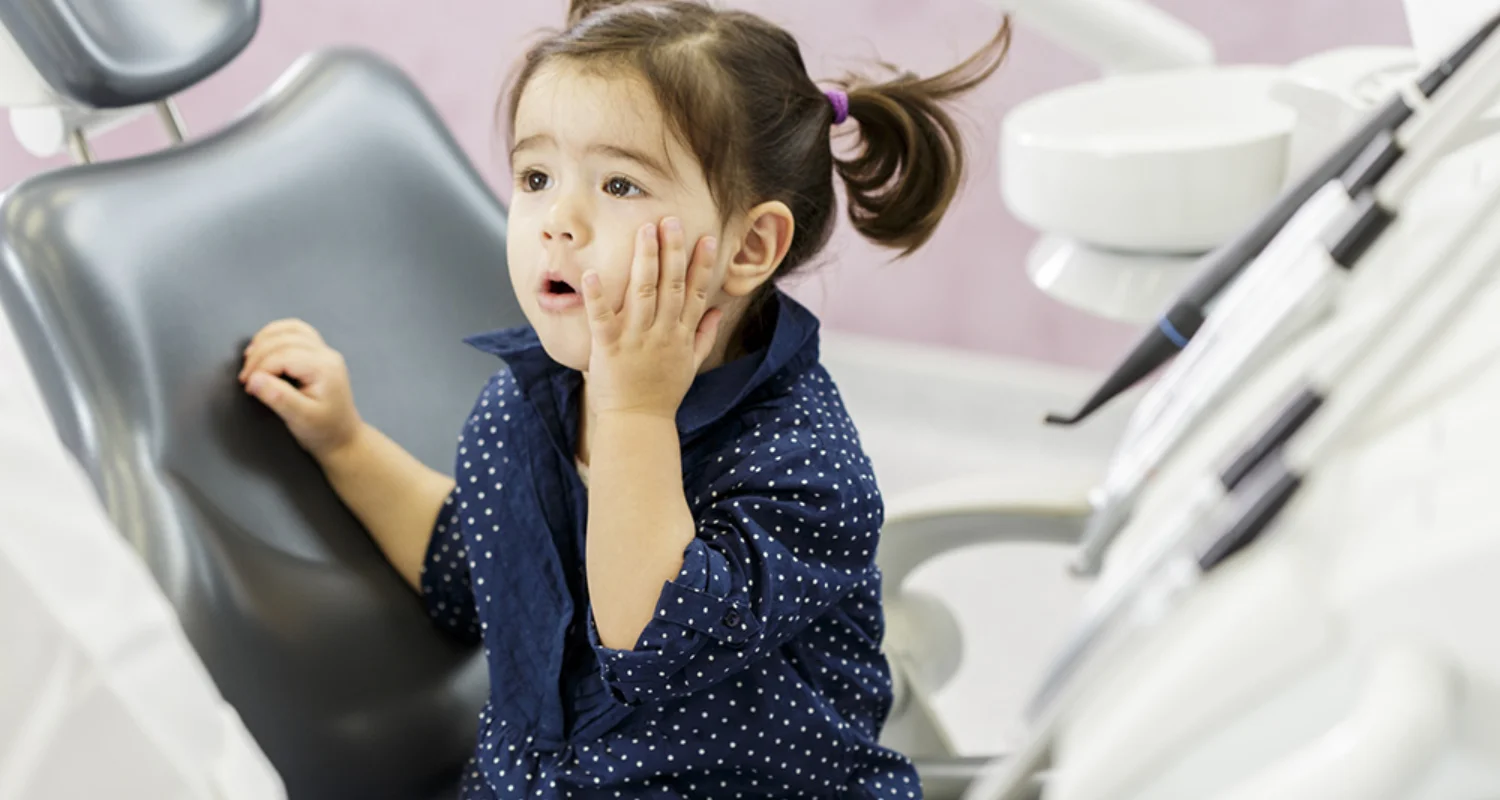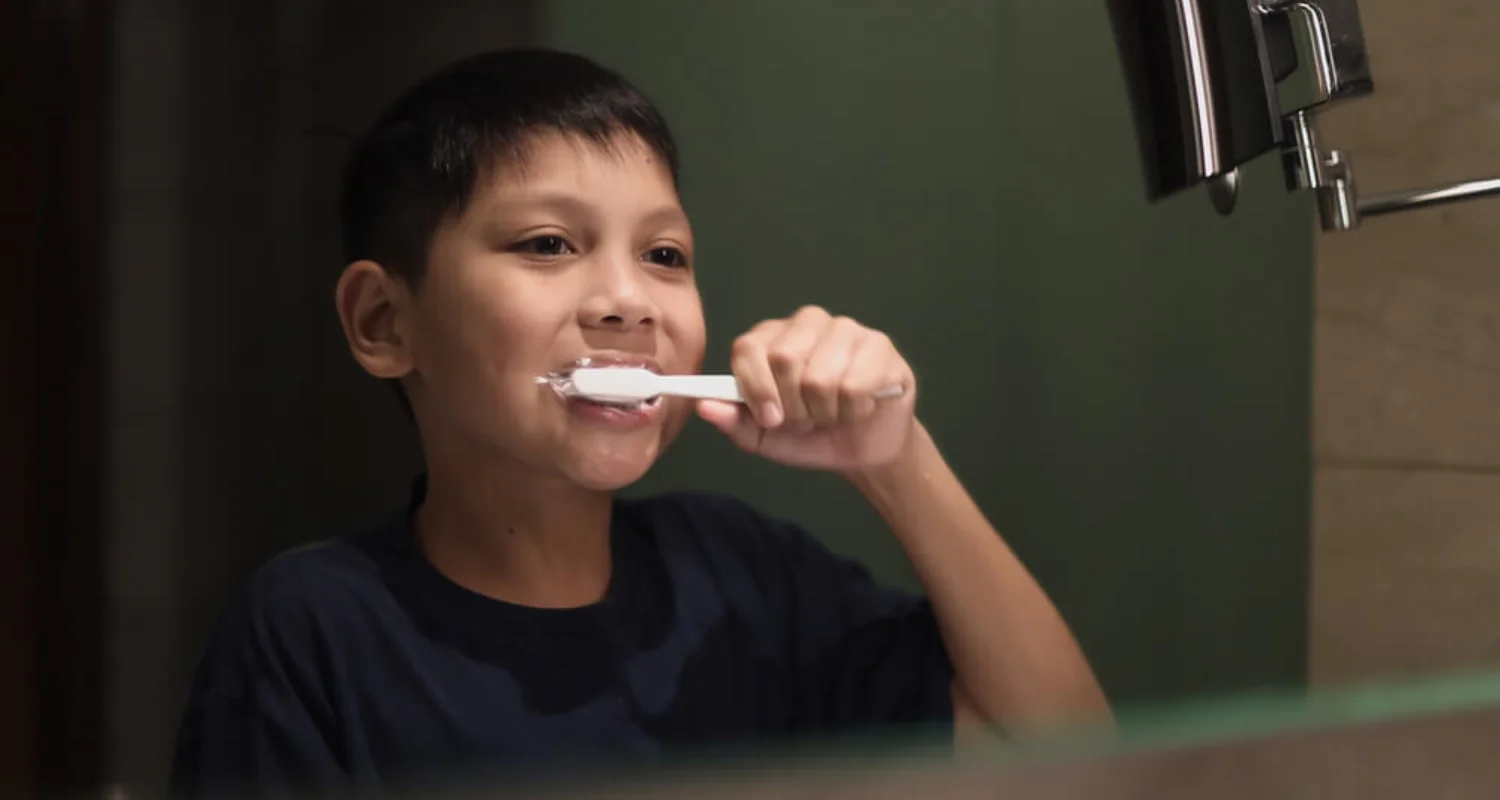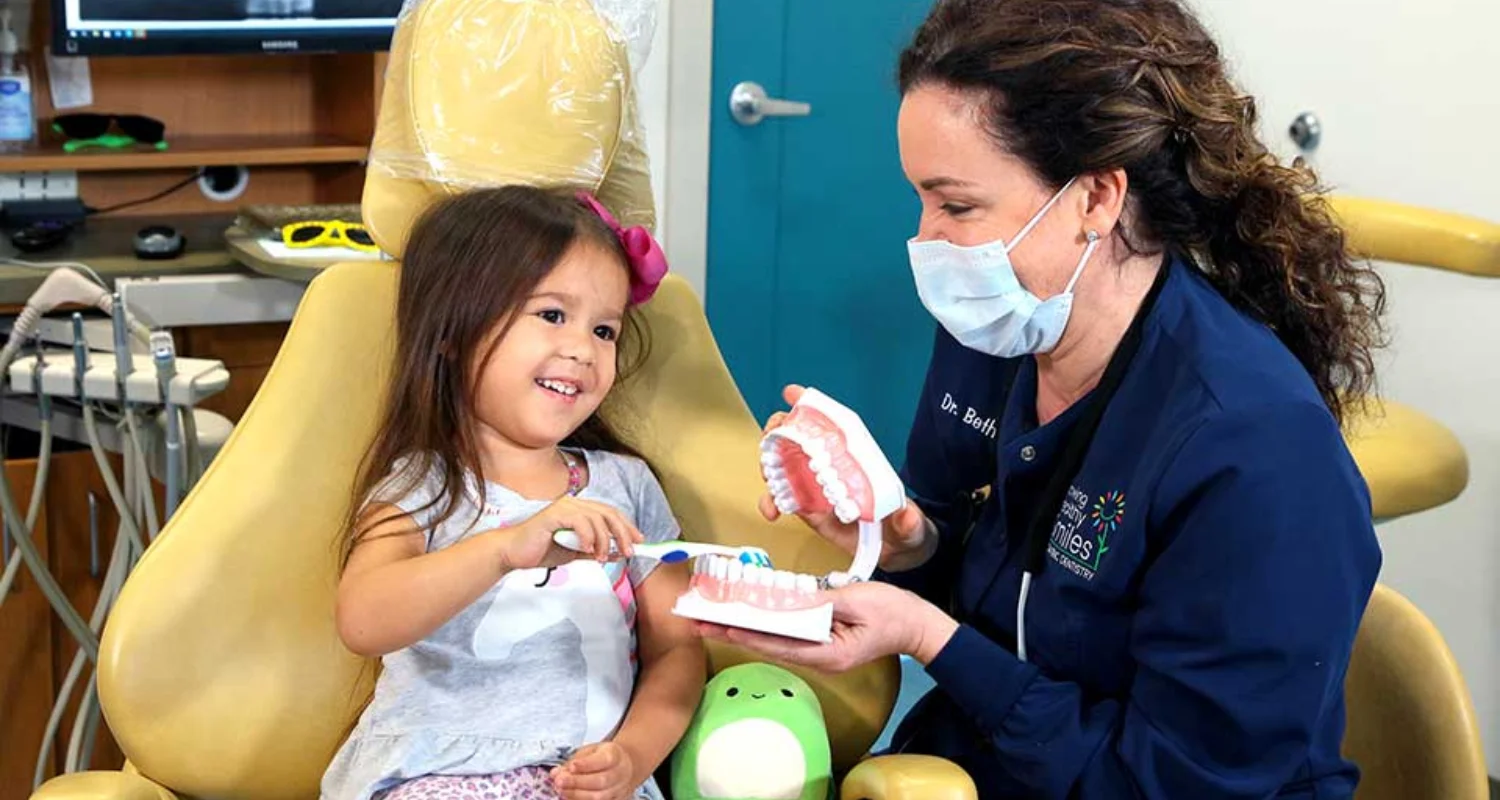Last Updated on: 15th December 2025, 11:15 am
Bad breath in kids is something you should be worried about, if you have children.
Halitosis, or bad breath, is often thought of as an adult issue, yet it is surprisingly common among children and teens. For young kids, especially in preschool, dealing with bad breath can be both embarrassing and challenging, leaving parents puzzled and confused about how best to help.
Bad breath in kids can stem from cavities, poor oral hygiene, mouth breathing, and even respiratory issues like sinusitis. Here, parents play a vital role by regularly checking for signs of halitosis, which could also signal deeper dental and medical concerns.
By encouraging healthy brushing habits and catching issues early, parents can help prevent odor-causing bacteria from taking hold, tackling one of the primary culprits behind bad breath,
This article explores the various causes of bad breath in kids, when to consult a pediatric dentist, and easy tips for keeping their breath fresh and smiles bright.
What causes bad breath in kids?
Bad breath in kids is a multifactorial phenomenon with significant prevalence worldwide. A study in Italy by Villa et al. reported a prevalence of 37.6% of halitosis among 101 children of 6 to 16 years of age.
Another study in 2021 found that the prevalence among children in Japan ranged between 8% and 45%, which makes it a concern that needs prompt attention.
Given below are a few factors that further contribute to halitosis in children:
● Pungent foods: Garlic and onions release sulfur compounds that linger in the mouth and bloodstream, causing temporary bad breath that brushing can’t fully remove but fades with time.
● Saliva shortage: Dry mouth from reduced saliva at night or chronic dryness (xerostomia) due to medications can cause bad breath in kids.
● Poor oral hygiene: Infrequent brushing and flossing allow plaque and food buildup, feeding bacteria that release foul-smelling compounds.
● Tongue coating: Bacteria and particles on the tongue’s back can cause a white coating and odor. Scraping the tongue helps reduce both.
● Cavities and infections: Tooth decay and gum infections trap bacteria and food, creating bad smells that regular brushing may not eliminate.
● Gum disease: Plaque buildup can cause gingivitis in kids, leading to gum inflammation and bad breath from bacterial toxins.
● Tonsil stones: Large or deeply pitted tonsils can trap food and bacteria, forming odor-emitting tonsil stones.
● Respiratory infections and allergies: Postnasal drip from infections or allergies provides bacteria with food, causing smelly breath.
● Mouth breathing: Mouth breathing dries out saliva, increasing the risk of chronic bad breath.
● Health conditions: Conditions like diabetes or acid reflux can cause bad breath; consult a doctor if common causes are ruled out.
● Loose crowns or fillings: Damaged dental work can trap bacteria and food, producing odors that brushing alone can’t fix.
● Foreign objects: Stuck objects in a child’s nose, like food or toys, can cause foul breath and may require medical attention.
How to know if bad breath in kids becomes serious?
Normal vs. concerning bad breath
Most children have what’s referred to as “morning breath” due to lower flow of saliva while sleeping, which leads to bacterial buildup. More commonly, bad breath associated with this source resolves shortly after they brush.
Morning breath is normally innocuous and occurs both in children and adults. However, if your child has a permanently foul, pungent breath beyond the time of brushing and consistently coming back, it might indicate a deeper issue.
Bad breath in kids is usually occasional, but there are warning signs that will make you suspect that your child’s halitosis may be serious.
Be on the lookout for these red flags
Constant bad breath that does not improve after brushing: If brushing and flossing do not freshen the breath of your child, it may indicate dental problems such as cavities, gum disease, or excessive bacteria accumulation on the tongue. Bad breath may also be caused by postnasal drip, dry mouth, or even sinus infections that create an odor in the mouth.
Sweet or acetone breath: If your kid has the smell of sweetness or acetone in their breath, it may be an indication of diabetes. Be aware of any smell from this group with the presence of other symptoms like severe thirst, increased urination, or extreme tiredness. Consult a healthcare professional if you find your child having these symptoms.
Chronic sore throat or enlarged tonsils: Bad breath accompanied by sore throat, swollen tonsils, or white patches on the tonsils may be a sign of a throat infection such as tonsillitis or strep throat. Infected or large tonsils may trap food and bacteria in the mouth and thus cause bad breath.
How to prevent bad breath in kids at home
Good oral hygiene habits
Instilling good oral hygiene habits is essential for preventing bad breath in kids. Encourage your child to brush their teeth twice a day with fluoride toothpaste to effectively remove plaque and prevent cavities. For older kids, incorporate daily flossing to clean between teeth where brushing may not reach. Additionally scraping the tongue can help eliminate any bacterial buildup, further freshening their breath.
Sugarless gum
Giving them sugar-free gum, especially if it contains xylitol, can help combat bad breath in kids. While it may not be ideal for toddlers, as they might swallow it, it is great for school-aged kids. Chewing gum boosts saliva flow, which helps wash away odor-causing bacteria. Moreover, xylitol can reduce plaque and cavity-causing bacteria
Hydration is key
Keeping children well-hydrated is vital for oral health. Encourage them to drink plenty of water throughout the day to maintain moisture in their mouths. A well-hydrated mouth helps wash away food particles and bacteria, significantly reducing the risk of bad breath in kids.
Healthy diet for fresh breath
A nutritious diet supports fresh breath. Limit sugary foods that can worsen bad breath and encourage a diet rich in fruits and vegetables to naturally cleanse the mouth and improve oral hygiene. Ensure that your kids don’t skip breakfast, as it stimulates saliva production and helps combat morning breath.
Regular oral care checkups
Routine visits to your pediatric dentist every six months are crucial for maintaining oral health and preventing bad breath. During these visits, professional cleanings remove plaque and tartar buildup, while the dentist can identify any underlying issues like cavities or gum disease. Regular visits help ensure your child’s mouth stays healthy and fresh.
When to see a doctor for your toddler’s bad breath
Good oral hygiene and hydration usually resolve bad breath in kids. However, certain situations may warrant medical attention, such as:
Persistent morning breath
While morning breath is normal, if your child’s breath is excessively foul and doesn’t improve, it could indicate halitosis that requires medical intervention.
Tooth decay
Untreated cavities can lead to tooth decay, which often results in noticeable bad breath due to bacteria buildup. It’s essential to consult a dentist to address any decaying teeth promptly.
Ears, throat, and nose issues
Bacteria accumulation in the mouth can cause bad breath, but conditions like sinus infections, enlarged tonsils, and acid reflux may also contribute to the same. If brushing and other remedies don’t improve their breath, it’s advisable to seek medical advice for potential underlying issues.
Takeaway
Bad breath in kids is a common issue that can stem from a variety of causes. Parents play a vital role in helping prevent bad breath by ensuring that their child follows healthy oral care habits, consumes a balanced diet, and sips water throughout the day for optimal hydration.
However, persistent or unusual odors may signal the need for professional evaluation. Early intervention can ensure your child’s smile stays fresh and healthy while addressing any potential health concerns.
Frequently Asked Questions
Why does my child's breath smell so bad?
Bad breath in kids, also known as halitosis, can result from various factors, including poor oral hygiene, cavities, mouth breathing, dry mouth, and certain foods. Respiratory infections, tonsil stones, or underlying health issues like sinusitis can also contribute to foul breath. Persistent bad breath may require a visit to a pediatric dentist for further evaluation.
Can a child’s loose tooth cause bad breath?
Yes, a loose tooth can sometimes cause bad breath. Food particles and bacteria can get trapped around the wiggling tooth, leading to odor if proper oral hygiene is not maintained. Encourage brushing and rinsing to keep the area clean and reduce bad breath in kids until the tooth naturally falls out.
What home practices can help prevent bad breath in kids?
Encouraging regular brushing (twice a day), flossing, tongue scraping, and drinking plenty of water can help prevent bad breath. Chewing sugarless gum with xylitol, for older children, can increase saliva flow and help fight odor-causing bacteria.
When should I be concerned about my child's bad breath?
If your child’s bad breath persists despite good oral hygiene, it may signal an underlying dental or medical issue, like cavities, gum disease, or respiratory infections. A sweet or acetone-like breath could indicate a more serious health condition, such as diabetes, and warrants immediate medical consultation.
How does diet affect bad breath in children?
Certain foods, like garlic and onions, can temporarily cause bad breath due to sulfur compounds that linger in the mouth. A diet high in sugary snacks can also promote bacterial growth, leading to odor. A balanced diet rich in fruits, vegetables, and water can help naturally cleanse the mouth and promote fresh breath.
Share
References
1. Bawazir O. A. (2021). Risk Factors, Diagnosis, and Management of Halitosis in Children: A Comprehensive Review. The journal of contemporary dental practice, 22(8), 959–963. https://www.thejcdp.com/abstractArticleContentBrowse/JCDP/25755/JPJ/fullText
2. AlMadhi, N. A., Sulimany, A. M., Alzoman, H. A., & Bawazir, O. A. (2021). Halitosis in Children Undergoing Full Mouth Rehabilitation under General Anesthesia. Children (Basel, Switzerland), 8(2), 149. https://www.mdpi.com/2227-9067/8/2/149
3. WebMD Editorial Contributor. (2023, April 12). Why Would a Toddler Have Bad Breath? Retrieved from https://www.webmd.com/children/why-would-a-toddler-have-bad-breath
4. Ewumi, O. (2022, March 9). Causes of bad breath in children. Retrieved from https://www.medicalnewstoday.com/articles/bad-breath-in-kids
5. Dentistry, I. P. (2023, February 22). What Causes Bad Breath in Kids and How to Get Rid of It? | Innovative Pediatric Dentistry. Retrieved from https://www.innovativepediatricdentistry.com/what-causes-bad-breath-in-kids-and-how-to-get-rid-of-it/
-
Nayibe Cubillos M. [Author]
Pharmaceutical Chemestry |Pharmaceutical Process Management | Pharmaceutical Care | Pharmaceutical Services Audit | Pharmaceutical Services Process Consulting | Content Project Manager | SEO Knowledge | Content Writer | Leadership | Scrum Master
View all posts
A healthcare writer with a solid background in pharmaceutical chemistry and a thorough understanding of Colombian regulatory processes and comprehensive sector management, she has significant experience coordinating and leading multidisciplina...




















